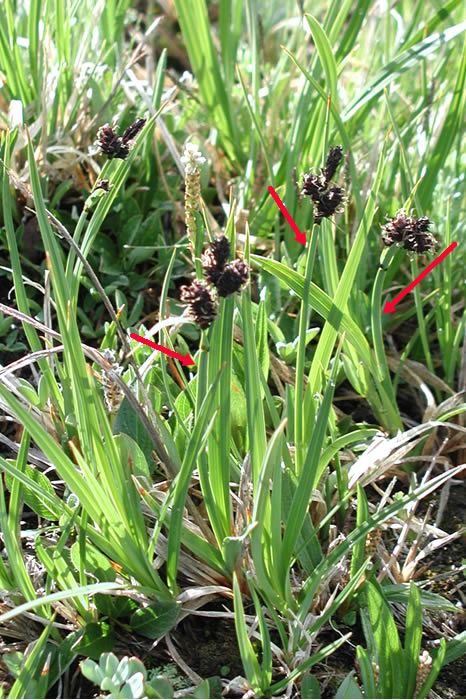It appears to be yet another Egyptian loan word.
Well I can see the answers.
They don’t always use the exact same name was my point. The fact remains when they use the same name they know it isn’t the same location.
It appears to be yet another Egyptian loan word.
Well I can see the answers.
They don’t always use the exact same name was my point. The fact remains when they use the same name they know it isn’t the same location.
I agree. But as I said the words could coMe from Indus to egypt, and again Indus to hebrew. Neither is proof. We have to look at the totality of evidence as I gave in my previous posts.
In what language?
| Pronunciation: | pee hah-khee-roth’ |
|---|---|
| Origin: | from 06310 and the fem. pl. of a noun (from the same root as 02356), with the article interpolated |
| Reference: | - |
| PrtSpch: | noun proper locative |
| In Hebrew: | tryxh 4 |
| In NET: | Pi-hahiroth 4 |
| In AV: | Pihahiroth 4 |
| Count: | 4 |
| Definition: | Pi-hahiroth = “place where sedge grows” |
What is that source?
If it was Hebrew it could mean ‘mouth of the gorges’.
Strong’s Exhaustive Concordance
Pi-hahiroth
From peh and the feminine plural of a noun (from the same root as chowr), with the article interpolated; mouth of the gorges; Pi-ha-Chiroth, a place in Egypt – Pi-hahiroth. (In Numbers 14:19 without Pi-.)
Sedges easily grow in coastal marsh.
No explicit answer. (Do I detect a trend? Or is that the norm. ; - )
But as I said the words could coMe from Indus to egypt,
Please explain how Indus words got to Egypt and were accepted into the Egyptian language just in time to be picked up by the Israelites. Is there any archeological evidence for people from the Indus Valley being present in Egypt? The loan words came from Late Egyptian (dated near the time of the Exodus) and not the earlier Middle Egyptian.
We have to look at the totality of evidence as I gave in my previous posts.
So far I have seen a totality of speculation on your part.
Moses’ skin was dark. At one time Moses was at Mount Sinai. God wanted to show him His powers. He asked Moses to put his hand inside his cloak. The Bible says that his hand became white. Then God again asked him to put his hand in the cloak and it regains its normal color. The skin becoming white means that the skin was “not white” before it became white; which means it was dark. Therefore, we can say that the word Moses has a connection with darkness.
You started with Moses was “dark” so why bring up the story of God showing His power? And then you say he had a connection with “darkness” when his normal skin color, like everyone around him, was dark? Was everyone connected to darkness and therefore everyone had a connection to Krishna?
Since the rise of Egyptology and decipherment of hieroglyphs, it was postulated that the name of Moses, with a similar pronunciation as the Hebrew Moshe, is the Egyptian word for Son, with Pharaoh names such as Thutmose and Ramesses roughly translating to “son of Thoth” and “son of Ra,” respectively.
No explicit answer.
Could be Egyptian or Hebrew. If interested see Pi-hahiroth | The amazing name Pi-hahiroth: meaning and etymology
The closest I could find for more info is a quote of “Jablonsky proposed the Coptic pi-Achirot, “the place where sedge grows””. Jablonsky, or earlier Jablonski, seems to have first been mentioned in connection with this particular translation in “An Exposition of the Whole Old Testament, Critical, Doctrinal, and Practical”, by John Gill, 1778, (on p. 577). I would guess this is the Paul Ernst Jablonski who wrote “De terra gosen”, published 1735.
What is that source?
Strongs. Netbible.
I quoted Strong’s. You did not.
It’s all garbage anyway. Sedges grow right by the sea. In Norfolk. Lancashire. Devon. Dorset. Cornwall. Kent. Suffolk. West Sussex. Lincolnshire. Yorkshire. Cumbria. Scotland. Wales. Ireland. The Netherlands. Spain. Greece. Malta. Italy. France. Kuwait. Morocco. Egypt.
Strongs. Netbible.
You use the Net Bible’s definition of the Strong’s concordance number, but that definition doesn’t match what is in the actual Strong’s Concordance. Hence the confusion. So in the future please make clear you are using the Net Bible. Here is what Strong’s says.
6367 Pi ha-Chiyroth pee hah-khee-roth’ from 6310 and the feminine plural of a noun (from the same root as 2356), with the article interpolated; mouth of the gorges; Pi-ha-Chiroth, a place in Egypt: --Pi-hahiroth. (In Numbers 14:19 without Pi-.)
And as Klax indicates sedges are found world wide. Check the distribution map at Wikipedia.
Carex is a vast genus of nearly 2,000 species of grass-like plants in the family Cyperaceae, commonly known as sedges (or seg, in older books). Other members of the family Cyperaceae are also called sedges, however those of genus Carex may be called true sedges, and it is the most species-rich genus in the family. The study of Carex is known as caricology. All species of Carex are perennial, although some species, such as C. bebbii and C. viridula can fruit in their first year of growth, and m...
I learned that ‘sedges have edges and rushes are round’ decades ago in Rocky Mountain National Park, not an especially low part of the world.

There are more species in the genus Carex in Rocky Mountain National Park than there are species of all other sedges combined.
Several issues
In other words this is not evidence to support Bharatij’s speculation. The suggestion that the site means place of sedges in Coptic (and presumably Egyptian) supports the connection of the Exodus story to Egypt.
As it’s far more likely to be a Hebrew transliteration of Egyptian of which Coptic is the Greek version… it probably does mean ‘the place where the sedge grows’. There’s a bit of Jewish proper scholarship.
As it’s far more likely to be a Hebrew transliteration of Egyptian of which Coptic is the Greek version… it probably does mean ‘the place where the sedge grows’. There’s a bit of Jewish proper scholarship.
You use the Net Bible’s definition of the Strong’s concordance number, but that definition doesn’t match what is in the actual Strong’s Concordance.
Not quite. If you punch “Pihahiroth sedges” in Google you will get tens and tens of references from Strongs supporting sedges. The problem is that the Hebrew meaning of the word is “mouth of the gorges” while the Egytian meaning is “sedges.” Please see link below:

;(Heb. Pi-hachiroth', פַּי הִחֹירֹת, understood by some to be of Hebrew etymology, and rendered mouth of the gorges; Sept. ἡ ἔπαυλις, τὸ στόμα
And here are some screenshots:


Pihahiroth can mean “place of sedges, where sedge grows”, or “mouth of the gorge(s)”, or “mouth of the canal”, or “the entrance to the caves”, or “house of the goddess Hathor”, or “bay of Hiroth”, or “three-way mouth of
water”, or “entrance to the water”, or “house of + desert hills/mountains to the west”, or Pi Ha-kharith “the former place of the wall”? The mouth of the gorge and entrance to the water meanings could fit Nuweiba at the end of the Wadi Watir, and/or the beach at Nuweiba.
Now, since the present discussion is regarding location of PiHahiroth in Egypt, I think ignoring the Egyptian meaning would suggest that the place was NOT located in Egypt.
As regards the finding of sedges acroos the world, that is neither denied nor relevant. We need to find sedges on the banks of the Yam Suf. Sedges are freshwater species and intolerant of salt water. THEY DO NOT GROW ON THE BANKS OF THE RED SEA; THEY DO GROW ON THE BANKS OF THE INDUS RIVER.
- Carex distans a fairly common sedge is found in Egypt and Sinai Carex distans L. | Plants of the World Online | Kew Science
In other words this is not evidence to support Bharatij’s speculation. The suggestion that the site means place of sedges in Coptic (and presumably Egyptian) supports the connection of the Exodus story to Egypt.
Sedges in Sinai are OK. In fact, sedges can be found near the Red Sea where fresh water comes in streams.
The word meaning sedges in Egyptian actually stands against Exodus from Egypt. The Hebrews camped at “Place of the Sedges” located on the banks of the Yam Suf; but there is no such place in Egypt because sedges do not grow nearthe Red Sea.
You use the Net Bible’s definition of the Strong’s concordance number, but that definition doesn’t match what is in the actual Strong’s Concordance.
I suggest we clear up the basic methodological framework. The question is which evidence from these six we would give more importance: 1] Parallels in Local Names, 2] Archaeological evidence, 3] Parallels in Local Texts, 4] Living Traditions, 5] Geography. Kindly place these in sequence of priority and, if you may, kindly give reasons for your sequence.
PLEASE, BILL. DO RESPOND TO THIS FOR THE DISCUSSION TO PROCEED.
Sedges in Sinai are OK. In fact, sedges can be found near the Red Sea where fresh water comes in streams.
The word meaning sedges in Egyptian actually stands against Exodus from Egypt. The Hebrews camped at “Place of the Sedges” located on the banks of the Yam Suf; but there is no such place in Egypt because sedges do not grow nearthe Red Sea.
Didn’t you just contradict yourself? Your first paragraph states that they do grow near the Red Sea when there is fresh water flowing in. I would think any place people were planning to camp would have fresh water. Note where fresh water is now may differ from where it was 2500 years ago.
Not quite. If you punch “Pihahiroth sedges” in Google you will get tens and tens of references from Strongs supporting sedges.
No. I quoted what the original Strong’s Concordance says. It only contains one definition. You continue to confuse references to the Strong’s number, which different people can define in different ways, with the original Strong’s definition. The first link of the Google results supports this. Just look at the section titled Strong’s Definitions. It is the same text that I quoted above. So all of those links are not “from Strongs.” Way back in post 153 I provided a link that talks about the difference in the Hebrew and Egyptian meaning. Which I guess you didn’t read.
Could be Egyptian or Hebrew.
while the Egytian meaning is “sedges.”
Care to explain yet another Egyptian loan word? It really doesn’t help your position.
We need to find sedges on the banks of the Yam Suf. Sedges are freshwater species and intolerant of salt water.
Sedges are found around freshwater in Egypt. We just need to look for a location for Pi-Hahirot that would be near fresh water (and there are several possible locations). Nobody is saying Pi-hahiroth and the first usage of Yam Suf refer to the same location. They just need to be near each other. In fact, Exodus 14:2 tells us " Tell the people of Israel to turn back and encamp in front of Pi-hahiroth, between Migdol and the sea" so they are definitely not the same location.
THEY DO NOT GROW ON THE BANKS OF THE RED SEA
But they grow around fresh water near the shore of the Red Sea.
THEY DO GROW ON THE BANKS OF THE INDUS RIVER.
Which doesn’t help your case as they grow in many places in Egypt.
“Let your conversation be always full of grace, seasoned with salt, so that you may know how to answer everyone.” -Colossians 4:6
This is a place for gracious dialogue about science and faith. Please read our FAQ/Guidelines before posting.